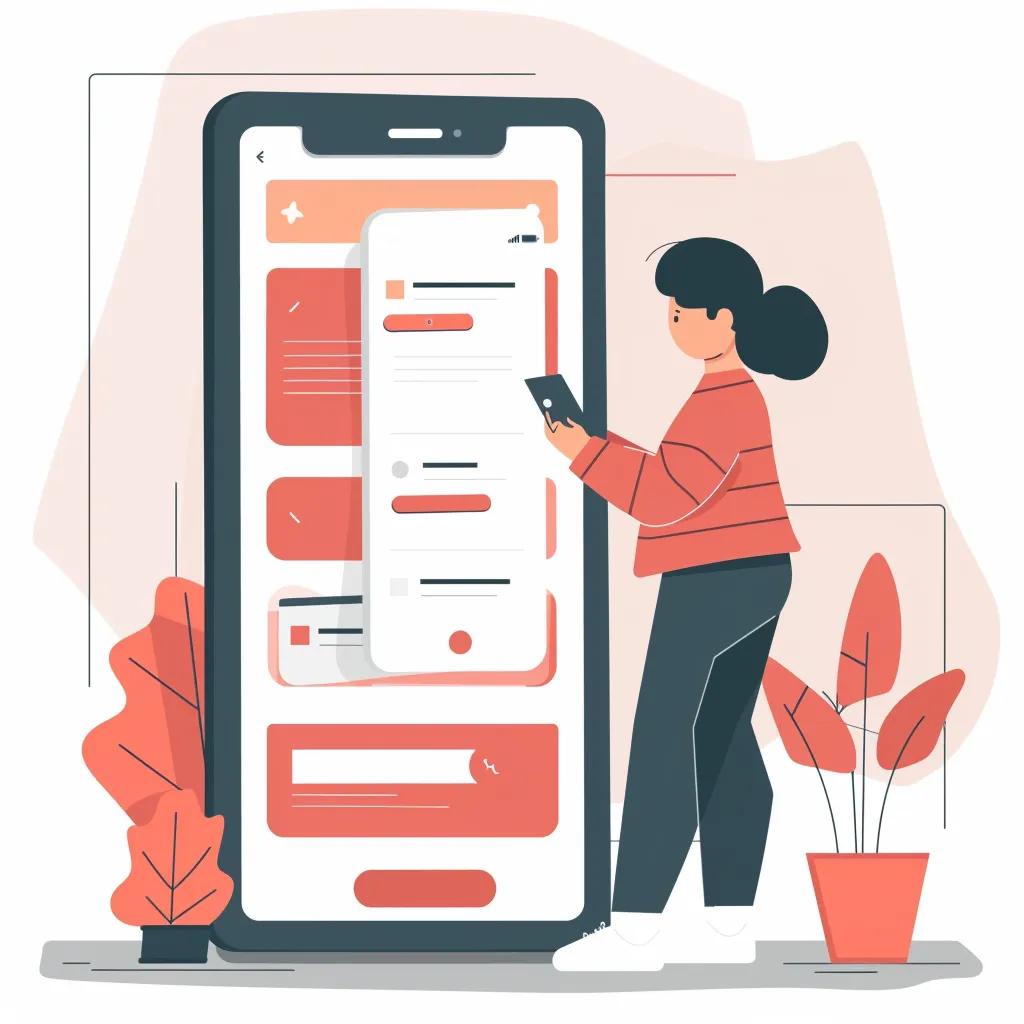
In the bustling world of local business, standing out is key. Web design is your secret weapon to boost brand identity and make a lasting impression. By weaving together visual harmony, user-friendly layouts, smart SEO, and structured data, your website becomes a beacon of recognition, trust, and engagement. Dive into this guide to discover:
- Design essentials that create a seamless brand experience
- SEO strategies and schema markup for local visibility
- Local SEO tactics—from Google My Business to PAA optimization
- Tools and metrics to gauge brand perception
- Real-life examples showcasing web design’s ROI
For personalized solutions, check out our affordable web design services to elevate your local brand identity.
Essential Web Design Elements for a Strong Local Brand Identity
Your local brand identity thrives on web design elements that boost recognition, convey values, and build trust at first glance. Consistent visuals create brand harmony, intuitive navigation fosters trust, and responsive layouts enhance engagement—together crafting a digital presence that resonates with your local audience.
Brand Identity and Web Design
Web design is the backbone of a strong local brand identity, enhancing recognition, conveying values, and building trust at first glance. Consistent visuals, like logo placement, color schemes, and typography, reinforce brand recognition across every page.
This research backs up the article’s assertion that key web design elements fortify local brand identity.
Here are three foundational design elements every local business website should prioritize:
- Logo and Color Palette – Consistent use of brand marks and colors enhances recall and evokes local familiarity.
- Typography and Messaging – Clear, on-brand fonts and messaging align your site with your offline identity.
- Navigation and Layout – Predictable menus and structure improve user satisfaction and reinforce credibility.
These core elements lay the groundwork for deeper experiences, leading us into how brand visuals influence recognition.
Visual Consistency: The Key to Brand Recognition

Visual consistency is your brand’s best friend, reinforcing recognition through repeated logo placement, color schemes, and typography. Imagine a bakery’s warm hues and custom iconography gracing every section, this visual harmony forges instant connections with customers, guiding them to trust signals like reviews and service descriptions.
User Experience: Building Trust Locally

User Experience (UX) is the silent architect of trust. A clear menu, fast load times, and straightforward calls to action showcase professionalism and reliability. Your Local Business Website → features → Intuitive UX to reduce friction, encouraging users to linger and engage with confidence.
| Element | Attribute | Example Value |
|---|---|---|
| Navigation | Clarity | Sticky header with labeled tabs |
| Mobile Responsiveness | Accessibility | Touch-friendly buttons |
| Page Speed | Performance | Under 3-second load times |
A seamless browsing experience encourages repeat visits and strengthens brand credibility, paving the way for mobile-focused strategies.
Responsive Design: Enhancing Local Engagement
Responsive design is your ticket to engaging local customers across devices. Mobile Optimization → boosts → Local Engagement by presenting menus, contact forms, and maps in device-friendly formats.
Benefits of Responsive Web Design
Responsive web design adapts layouts to various screen sizes, ensuring readability and interaction on smartphones, tablets, and desktops, which improves user experience and engagement. This mobile optimization boosts local engagement by presenting menus, contact forms, and maps in device-friendly formats.
This research supports the article’s claim that responsive design is crucial for improving local customer engagement.
- It prioritizes touch targets and legible fonts on mobile screens.
- It supports accessibility standards for wider audiences.
- It maintains consistent branding across breakpoints.
These adjustments reduce bounce rates and extend session duration, naturally linking into semantic SEO tactics.
Amplify Your Local Brand Visibility with Semantic SEO and Structured Data
Semantic SEO and structured data are your allies in boosting local brand visibility. By aligning content with user intent and signaling business details to search engines, your Local Business → gains → Search Visibility, accurately representing services, location, and offerings in search results.
Semantic SEO and Local Business
Semantic SEO leverages entity relationships and context to align content with user intent, while structured data signals business details directly to search engines. This approach helps search engines understand context, improving rich result eligibility and aligning search queries with a brand’s unique story.
This research supports the article’s claim that semantic SEO and structured data amplify local brand visibility.
Semantic SEO: A Game Changer for Local Businesses
Semantic SEO organizes content around meaningful entities—like “Local Business,” “Brand Identity,” and “User Experience”—rather than isolated keywords. This approach helps search engines understand context, improving rich result eligibility and aligning search queries with your brand’s unique story.
Enhance Search Engine Understanding with LocalBusiness Schema
LocalBusiness schema uses JSON-LD to define your entity’s core attributes—name, address, telephone, openingHours, geo, and aggregateRating. By describing these properties explicitly, Structured Data → describes → LocalBusiness, enabling search engines to display accurate knowledge panels and map listings.
Boost Local Brand Authority with Advanced Schema Types
Leveraging additional schema types enriches entity descriptions and user interactions:
- Service – Specifies offered services and benefits
- Product – Highlights featured products with pricing details
- FAQPage – Provides direct Q&A for common customer queries
These enhancements support deeper understanding and more interactive search features, leading into local SEO tactics.
Local SEO Strategies to Elevate Brand Authority
Integrating local SEO with web design ensures your site not only looks professional but also ranks prominently in community-driven searches. Local Keyword Strategy and on-page entity signals reinforce your website’s relevance in local queries.
Local SEO Strategies
Integrating local SEO with web design ensures that a website appears prominently in community-driven searches. Optimizing a Google My Business profile confirms location details, service offerings, and customer reviews, which strengthens brand identity in local packs.
This research supports the article’s claim that local SEO strategies complement web design to boost brand authority.
Google My Business: Reinforce Your Local Brand
Optimizing a Google My Business profile confirms location details, service offerings, and customer reviews, all of which strengthen Brand Identity in local packs. Follow these steps:
- Claim and verify your listing
- Complete every field: business hours, photos, service descriptions
- Publish regular updates and respond to reviews
- Use high-quality images consistent with your website branding
A robust GMB profile extends the cohesive identity established on your website into Google’s map results.
Local Keywords and Entity-Based Content: Boost Visibility
Local keywords and entity-based content move beyond simple terms to cover neighborhoods, service types, and related topics. By creating pages around “responsive web design for restaurants in [City]” or “web design services near me,” Local Keyword Strategy → improves → Local Search Rankings through precise location signals and topic depth.
Answering People Also Ask (PAA) Questions: Enhance Local Search Presence
Addressing PAA questions directly in headings and paragraphs allows your site to capture featured snippets and PAA boxes. Structure your content to include common queries—for example, “How does web design enhance brand identity?”—followed by concise, self-contained responses. This tactic enhances snippet eligibility and drives targeted clicks from potential customers.
Measure and Enhance Your Local Brand Perception
Measuring brand perception requires tracking metrics that reflect both visibility and user sentiment. Monitoring these indicators guides design and content improvements that reinforce brand identity.
Key Performance Indicators (KPIs) for Local Brand Success
Below are essential KPIs for assessing local brand impact:
| Metric | Attribute | Indicative Value |
|---|---|---|
| Branded Search Volume | Growth Rate | +25% year-over-year |
| Local Pack Ranking | Average Position | Top 3 for key local queries |
| Average Review Rating | Customer Satisfaction | 4.5 out of 5 |
Tools to Monitor Your Local Brand’s Online Reputation and SEO Performance
Effective monitoring relies on specialized platforms that capture both search and sentiment signals:
- Google Analytics for traffic and engagement data
- Google Search Console for indexing and rich result insights
- BrightLocal for local ranking and citation tracking
- Mention or Brandwatch for real-time brand mention alerts
These tools ensure continuous optimization of your web design and semantic SEO efforts.
Real-World Examples of Web Design Boosting Local Brand Identity
Examining case studies highlights how targeted design upgrades lead to measurable business outcomes, reinforcing theory with proof.
Responsive Web Design: A Catalyst for Local Business Engagement
A family-owned B&B redesigned its site with a mobile-first layout and streamlined booking form. Responsive Design → boosted → Booking Rate by Thirty percent within two months and reduced mobile bounce by 40 percent.
Consistent Branding: The Impact on Customer Trust and Revenue
A local café standardized its color palette, imagery, and typography across its website and social channels. Brand Consistency → amplified → Revenue by 20 percent year-over-year while garnering 15 percent more five-star reviews.
With these strategies in place, local businesses can forge stronger brand identities, deepen customer trust, and achieve lasting competitive advantage through web design and semantic SEO.
Frequently Asked Questions
What are the benefits of using structured data for local businesses?
Structured data helps local businesses communicate essential information to search engines in a clear format. By implementing schema markup, businesses can enhance their visibility in search results, leading to rich snippets that display crucial details like reviews, ratings, and service offerings. This not only improves click-through rates but also helps potential customers find accurate information quickly, ultimately driving more traffic to the website and increasing local engagement.
How can local businesses effectively track their brand perception online?
Local businesses can track brand perception by utilizing various metrics and tools. Key Performance Indicators (KPIs) such as branded search volume, local pack rankings, and average review ratings provide insights into how the brand is perceived. Tools like Google Analytics, Google Search Console, and BrightLocal can help monitor traffic, engagement, and local rankings, allowing businesses to adjust their strategies based on real-time feedback and improve their online presence.
What role does mobile optimization play in local web design?
Mobile optimization is crucial for local web design as it ensures that websites are accessible and user-friendly on smartphones and tablets. With a significant portion of local searches conducted on mobile devices, a responsive design enhances user experience by providing easy navigation, quick load times, and touch-friendly interfaces. This not only reduces bounce rates but also increases engagement and conversions, making it essential for local businesses aiming to attract and retain customers.
How can local businesses leverage social media to enhance their brand identity?
Local businesses can enhance their brand identity through social media by consistently sharing content that reflects their values and engages their community. By posting updates, promotions, and customer testimonials, businesses can create a relatable and trustworthy image. Additionally, interacting with followers and responding to comments fosters a sense of community, which strengthens brand loyalty and encourages word-of-mouth referrals, ultimately boosting local visibility and engagement.
What are some common mistakes to avoid in local web design?
Common mistakes in local web design include neglecting mobile responsiveness, using unclear navigation, and failing to optimise for local SEO. Additionally, inconsistent branding across platforms can confuse customers and weaken brand identity. It’s also important to avoid cluttered layouts that overwhelm visitors. By focusing on user experience, clear messaging, and cohesive branding, local businesses can create a more effective online presence that resonates with their target audience.
How can local businesses utilize customer reviews to improve their online presence?
Customer reviews play a vital role in enhancing a local business’s online presence. Positive reviews can boost credibility and attract new customers, while constructive feedback provides insights for improvement. Businesses should actively encourage satisfied customers to leave reviews on platforms like Google My Business and Yelp. Responding to reviews, both positive and negative, demonstrates engagement and commitment to customer satisfaction, which can further enhance brand reputation and visibility in local searches.
Conclusion
Enhancing your local brand identity through effective web design is essential for standing out in competitive markets. By prioritizing visual consistency, user experience, and semantic SEO, businesses can significantly improve recognition and trust among local customers. To take the next step in elevating your brand, consider exploring our affordable web design services. Invest in your online presence today to achieve lasting impact and engagement in your community.

